Post-Independence India was a new revolution in India’s history. As the struggle for freedom was finally achieved, new mindsets were formed. The new free India respected and worshiped humanity at its best along with promoting freedom of expression. At this point, a group of supreme artists came together who shared a common art type: modern art for the new free India and called themselves the Bombay Progressives Art Group!
They intended to "paint with absolute freedom for content and technique, almost anarchic, save that we are governed by one or two sound elemental and eternal laws, of aesthetic order, plastic co-ordination and color composition." [3]
An Introduction to The Progressive Artists Group
The Progressive Artists Group was formed in 1947 by F.N Souza, S.H Raza, M.F Husain, K.H Ara, H.A Gade, and S.K Bakre. Notable artists like Vasudeo S. Gaitonde, Bhanu Athaiya, Krishen Khanna, and Mohan Samant also joined the group later. Since the group was formed in Bombay it is often referred to as the Bombay Progressive Artists Group. All the six founding members hailed from different parts of the country with each one’s journey being completely different from the other but the only aspect that united them was their skill of painting and more than that a determination to break through traditional art rigidness and explore new art forms.
This powerful team of six wanted to pass on art forms that were forced upon during the British Raj. This included:
Academic Art: a painting style influenced by European Academies of Art featuring movements of Neoclassicism and Romanticism.
The Bengal School of Art also known as ‘The Indian Style of Painting’: an art movement of the early 20th century inspired by Indian nationalism. It was led and promoted by Abanindranath Tagore and British arts administrators. Artworks of this form took inspiration from Mughal art, Indian spirituality, and rejected materialism. F.N Souza criticized the Bengal School of Art paintings as ‘sentimental pictures’ for the nostalgic gouaches of pining damsels (ref: The Progressive Revolution, Page 17).
Art for the Progressives rejected these traditional art forms and believed in experimentation for new art types, the most popular being abstraction which was never seen before. They wanted to associate not only with art in India but also at an international level. As every member of the group hailed from their different life type each one of them was influenced by modernism in their way. For F.N Souza it was Expressionism whereas for Vasudeo S. Gaitonde it was abstract art and for M.F Husain it was influenced by his posters.

Anything new especially something that is against the traditions and society norms is difficult to establish. This was also the case with Modern Art and members of the Progressive Artists Group faced harsh criticism for their art. Souza was criticized for his erotic paintings (especially a painting in his early exhibition in which he painted full length nude of himself), Akbar Padamsee was taken to court.
Despite these criticisms’ members of the Progressive Artists Group continued their movement and traveled from all parts of Bombay to meet up at Chetna restaurant, Bombay Art Society, Marine Drive, and Rampart Row to discuss their art. S.H Raza describes their meetings as:
“What we had in common besides our youth and lack of means was that we hoped for a better understanding of art. We had a sense of searching and we fought the material world. There was at our meetings and discussions a great fraternal feeling, certain warmth, and a lively exchange of ideas. We criticized each other's work as surely as we eulogized it. This was a period when there was no modern art in our country and a period of artistic confusion” (ref: The Progressive Artists Group, Pg 30)
Each member had its unique journey exploring modern art. In this blog, we highlight the artistic journeys of the founding members. Souza and Raza left India in the late 1950s, followed by S.K. Bakre also leaving the group which ultimately led to the group being dissolved in 1956.
Ebrahim Alkazi: A Significant Supporter and Promoter of the Progressive Artists Group
Ebrahim Alkazi and his wife Roshen Padamsee were significantly responsible for promoting many members of the Progressive Artists Group not only in India but also at an international level. Apart from Alzaki; Mulkraj Anand, Walter Langhammer, Emmanuel Schlesinger, Rudi Von Leyden, and Kekoo Gandhy were also active as collectors.
Alkazi strongly believed that modern art in India needed to be fuelled by international exposures. New ideas were the need of the hour.
Alkazi established himself as a theatre director making plays inspired from the West along with being tweaked to have Indian viewpoints. Loving the work of members of the Progressive Artists Group, Alzaki was friendly to most of them. He invited M.F Husain to design the sets and costumes (for example half masks in Alkazi’s production of T.S Eliot’s Murder in The Cathedral) of his plays to showcase both Greek and Indian realism.
Alkazi also launched a monthly arts publication called the Theatre Group Bulletin to promote the emerging art scenario in India. He paid specific attention to works of The Progressive Artists by putting them on the cover page, encouraging writers to review their painting, mentioning their awards and invitations they received to go abroad. This helped the Progressive Artists Group gain popularity not only in India but also among Theatre Group Bullentin’s international subscribers.
Francis Newton Souza
“I do not believe that a true artist paints for coteries or for the proletariat. I believe with all my soul that he paints solely for himself. I made my art a metabolism; I express myself freely in paint in order to exist. I paint what I want, what I like, what I feel.”
F. N. Souza, Words and Lines
This quote by F.N. Souza pretty much sums up his belief as a true member of the Progressive Artists Group. Very boldly, he breaks through stereotypes of paintings made to please the viewers. His art is a way to stress out and enjoy what he loves the most: the freedom to paint whatever he feels like.
Souza was born in Goa to Roman Catholic parents. His birthplace Goa inspired a lot of his paintings until he left for London. He often painted Roman Catholic households showcasing their beautifully maintained gardens and trees, Churches, and his perception of spirituality.
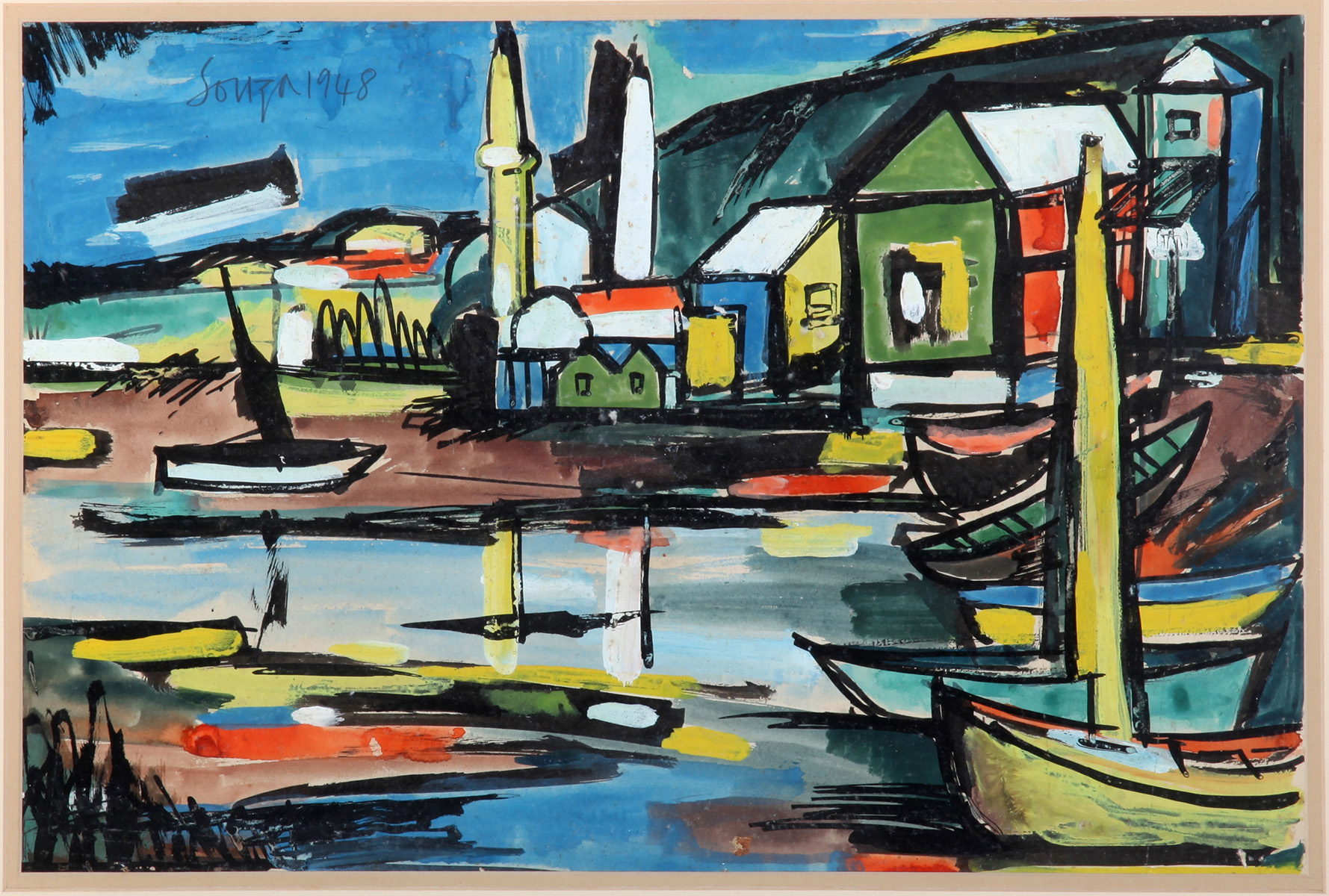
When he moved to Bombay, he joined JJ School of Arts. In 1947 he was expelled from his college for participation in the Quit India Movement. From the shift of Goa's scenic beauty to Bombay city hustle-bustle his paintings in the 1940s depicted scenes from Bombay. Soon his paintings started featuring various scenes and inspirations from different parts of India, for example, South Indian bronzes and erotic designs portrayed in the Khajuraho temples of Madhya Pradesh. Souza was often criticized for eroticism in his works of art. When he formed the Progressive Artists Group in Bombay he aimed to promote international avant-garde art in India and explore as much of art as he can.
Art historian Yashodhara Dalmia describes him as:
"At the heart of Souza's creativity was the belief that society's destructive aspects shouldn't be suppressed, they should be aired and confronted. Be it the hypocrisy of the church, the corruption of the upper classes, or the repression of sexuality in a country that has a Khajuraho, he was uncovering the underbelly of existence.”
[5]
When Souza moved to London he worked as a journalist side by to make a living. He wrote an autobiographical essay in Stephen Spender's Encounter Magazine and that is when Spender introduced him to the owner and art collector of Gallery One. That was his turning point! Souza's 1955 exhibit of paintings was sold out!
[6]
Sayed Haider Raza
S.H. Raza another co-founder of the Progressive Artists Group hailed from Madhya Pradesh and in 1950 moved to France to explore his career as an artist. He is significantly known for the projection of Indian ethnographic concepts like Bindu, Purush Prakriti, and Nari in his geometric abstract art pieces. Raza bagged various awards and recognitions like Padma Shri, Fellowship of The Lalit Kala, Padma Bhushan, Padma Vibhushan, Prix de la critique for his path-breaking journey as an artist. He has studied at Nagpur School of Art followed by J.J School of Arts in Bombay and further at École Nationale supérieure des Beaux-Arts (ENSB-A) in Paris.
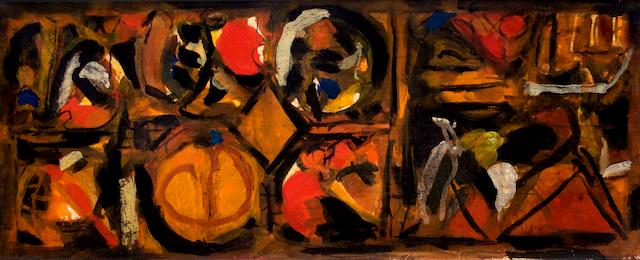
During the partition of India and Pakistan Raza's brothers and sisters migrated to Pakistan but Raza chose to be in India.
Krishen Khanna during the Gallery Cruz exhibit in Paris describes Raza’s artistic style as being the most unique one:
“Souza and Padamsee painted in a quasi-modern fashion. Raza, however, made a throwback to the Mughal period, creating jewel-like watercolors, with the pigment rubbed in with a shell. He was vastly successful and acquired by important collectors."
[4]
Raza experimented with Western Modernism, Expressionism, Abstract art, and Tantrism. His most famous works highlighted landscapes in the 1944 exhibit which was admired by critics as 'juicer' and 'delightful'. His greatest contribution to the Progressive Artists Group was rejecting naturalistic ways of painting landscapes and adopting new art forms to depict nature's beauty.
[3]
Krishnaji Howlaji Ara
K.H. Ara fled away from his birthplace Hyderabad and came to Bombay where he took up a job of a houseboy for an English family. In his leisure time, he explored his hobby for painting which he didn't realize was a great talent until it caught the attention of Times of India art critic Rudy Voh Leyden and later Walter Langhammer who was so impressed that he enrolled Ara in J.J School of Arts to sharpen his skill.

Ara was the first contemporary artist to use female nudes as his subject. However, his painting of female nudes has been criticized as being not accurate and a false depiction by several critics. Just like other members of the Progressive Artists Group, Ara experimented not only with the subject of his art but also with his artistic style. His most celebrated artistic style was the impasto effect where he used a thin pigmentation to highlight his paintings. Ara rose to fame when he won the Governor’s prize at Bombay Art Society in 1944 for his painting ’Two Jugs’.
Hari Ambadas Gade
Hari Ambadas Gade was famous for his mastery in colors. Most of his works included landscape paintings that were brought to life with watercolors followed by his later techniques of oil paintings. He came in the limelight with two of his paintings: ‘Narrow Lane’ and ‘Fountain Jubbalpore’ displayed in the 1947 exhibition of Bombay Art Society. These landscape paintings were praised for their emotional understanding of colors and for being in a hand to hand relation with Raza's landscapes. Unlike other members of the Progressive Artists Group, Gade had a strong educational background holding a degree in Science and Mathematics from Nagpur University followed by a diploma from J.J School of Art. His paintings reflect his knowledge of science with geometrically designed landscapes which also relate to the art of cubism.
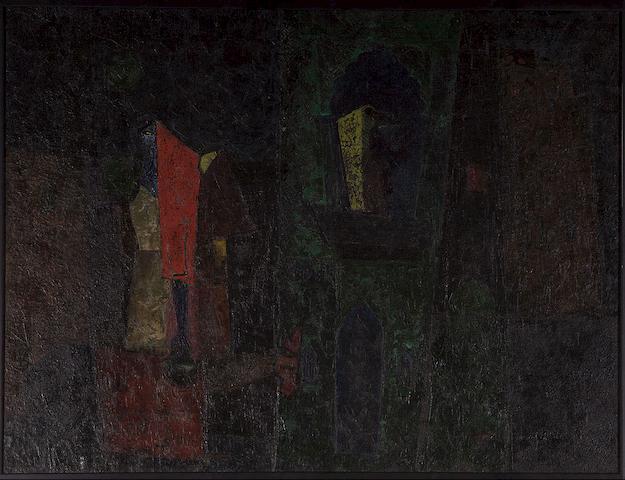
Gade won a gold medal at the Bombay Art Society in 1956 for his avant-garde style of landscape artwork.
Sadanand Bakre
Sadanand Bakre was the only sculptor of the Progressive Artists Group. His friendship with Ara encouraged him to be part of the Progressive Artists Group founders’ team.
Bakre was born in Baroda and started working under sculptor Raghunath Phadke from his early teenage years. Mastering the art of sculpting, Bakre was always inclined towards exploring painting but did not have the funds to pursue a painting course or buy the materials.
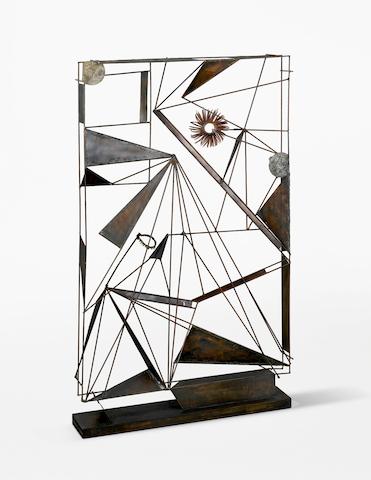
Image Via: Sotheby's
After reading about modernism, Bakre was inspired to try out distinctive styles of both painting and sculpting. Bakre’s artworks were extremely unique as he portrayed the subject sharply rather than focusing on its features or structure. He was also praised for his accurate sense of color combinations.
He returned to India in 1975 and later lived a solitary life. Bakre also won a lifetime achievement award from the Bombay Art Society in 2004.
M.F. Husain
Maqbool Fida Husain is one of the most renowned pioneers in the history of Indian art and also a significant founding member of the Progressive Artists Group.
Partition of India and Pakistan and the idea of a secular India had a huge impact on his paintings and he strongly believed that a new modern art should prevail as the nation celebrates freedom.
He quotes "When the British ruled, we were taught to draw a figure with the proportions from Greek and Roman sculpture … That was what I thought was wrong…the walk of a European is erect and archaic.”
Husain believed that India no longer needed the influence of the Western culture and that Indian history and the religion of Hinduism already has a lot to inspire from. He believed that modern Indian art should follow the concept of 'Indianness' and should be recognized by the people on the streets of India.
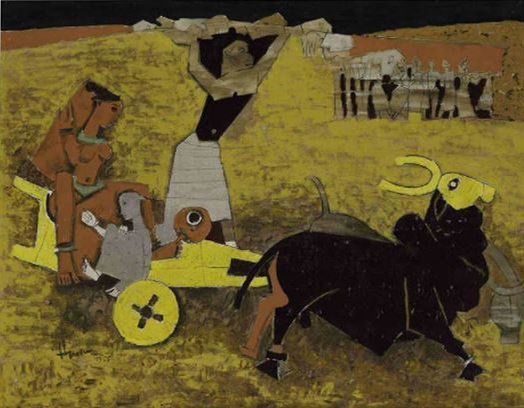
Just like Souza he took inspiration from the Khajuraho sculptures and was obsessed with the Indian female body. He studied the Hindu religious traditions, temple sculptures of Goddesses, Indian Chola Sculpture, Indian dance forms like Bharatnatyam to paint accurate body postures.
Husain also took inspiration from strong pillars of India like Mother Terresa and Indra Gandhi for his paintings. His painting of a nude Bharat Mata was heavily criticized following right-wing organizations to file an arrest on him for hurting religious and political sentiments.
[2]
In Summary
The group which was founded in 1947, disbanded around the mid-1950s. Three group shows are recorded - 1949, 1950, and in 1953. The group disbanded as most of the founding members went overseas.
"It is a sad commentary on the cultural situation in our country and the level of art criticism. Our most creative talents in the field of art, music, and literature have had to turn to other countries through frustration and lack of recognition in their homeland. Just a few years ago three of our most eminent painters, namely Padamsee, Raza and Souza were almost hounded out of the country, not only through lack of appreciation but also through ignorant and inept attacks by the public and the press. These same painters have not only won recognition for contemporary Indian art abroad but have also carried away awards in international competitions." [1]
References:
[1] The Progressive Revolution: Modern Art For a New India edited by Zehra Jumabhoy and Boon Hui
[2] M.F Husain’s Modern India by Bowdoin Journal of Art
[3] The Progressive Artist Group - by Rudra Majithia
[4] Bindu Period by Gayatri Sinha, India Today, 8/8/2016
[5] God, sex & Souza by Neelam Raj, Times News Network, 5/5/2010
[6] Francis Newton Souza- Enfant Terrible of Modern Art by Neha Berlia
[7] Wikipedia